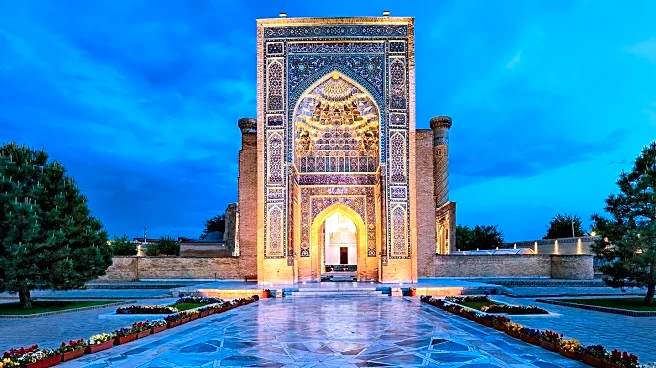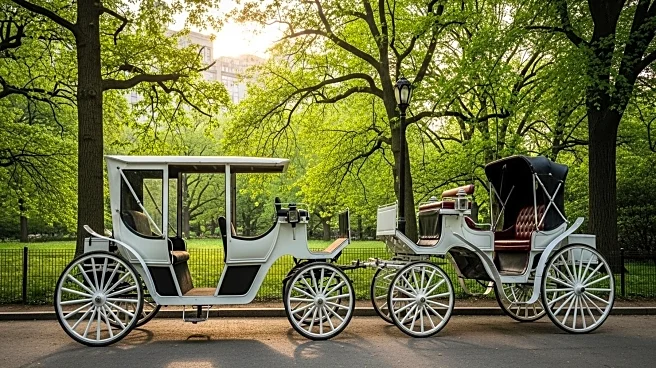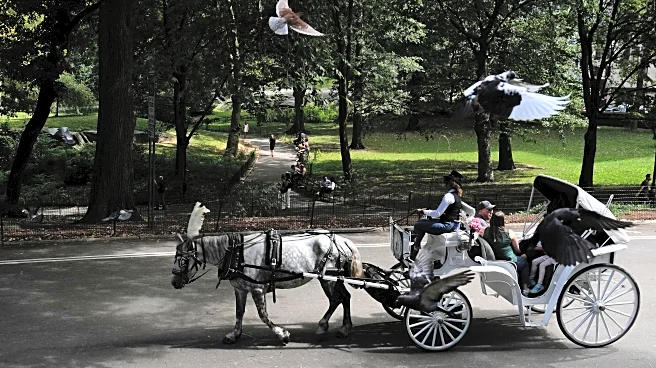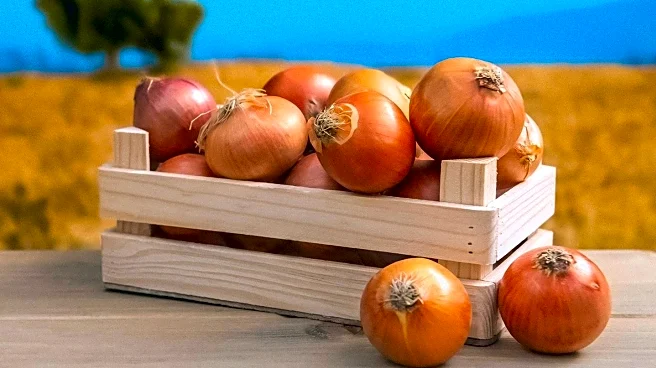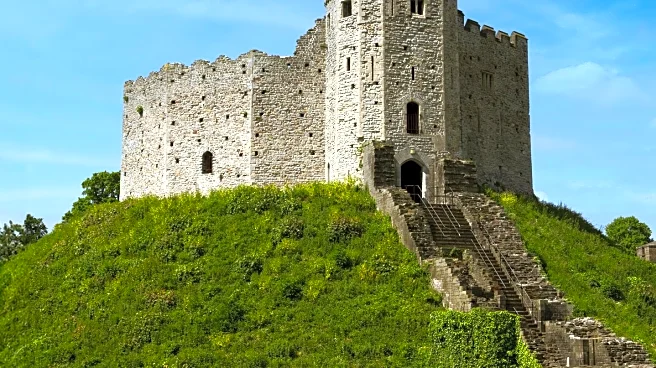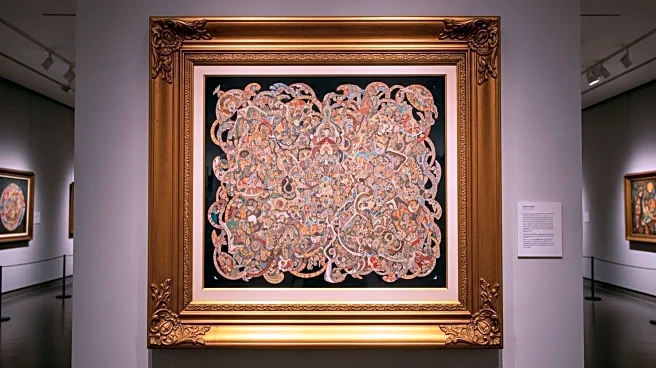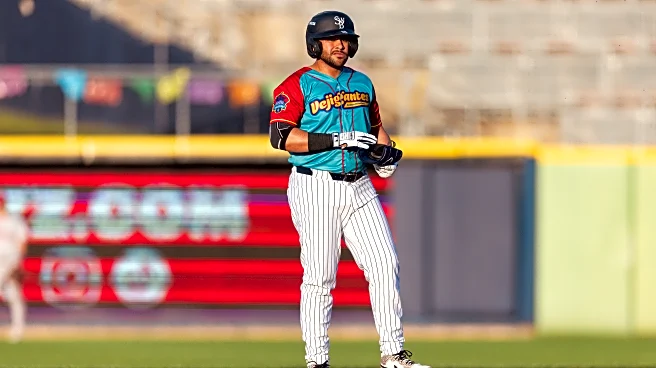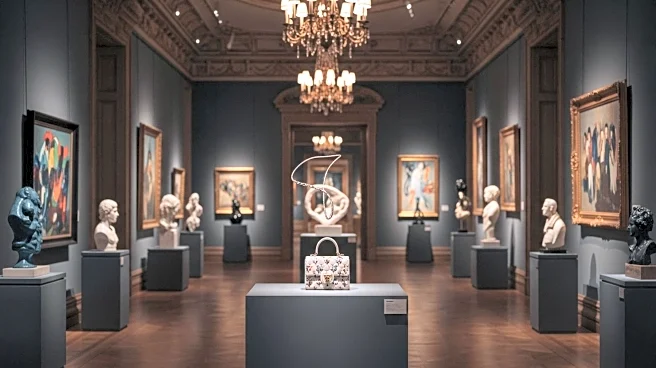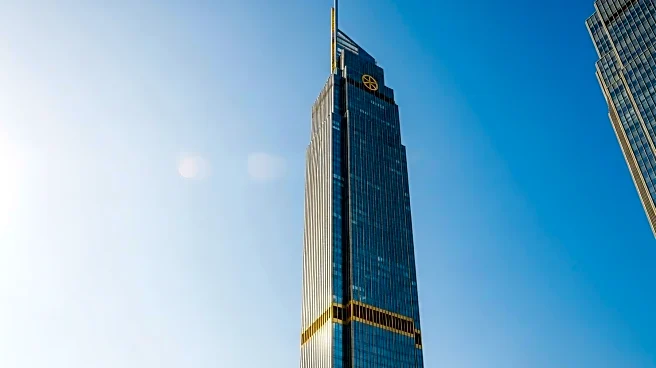What's Happening?
The Metropolitan Museum of Art has introduced a new installation featuring large-scale bronze animal sculptures by artist Jeffrey Gibson. Titled 'The Animal That Therefore I Am,' the installation is part of the 2025 Genesis Facade Commission and includes sculptures of a hawk, squirrel, coyote, and deer. These animals hold cultural significance for Indigenous communities and are native to areas like Central Park and the Hudson Valley. Gibson, who is of Choctaw and Cherokee descent, created these sculptures using driftwood, animal hides, and other materials before casting them in bronze. The installation draws inspiration from Jacques Derrida's book, which discusses the human-animal relationship. The sculptures are displayed on the museum's iconic Fifth Avenue facade and will remain on view until June 9, 2026.
Why It's Important?
This installation highlights the intersection of art, culture, and Indigenous heritage, offering a platform for underrepresented narratives within a major cultural institution. By featuring Indigenous themes and materials, the Met is acknowledging and celebrating the contributions of Native American artists. This move could influence other museums to incorporate more diverse perspectives in their exhibitions. The installation also prompts discussions on the relationship between humans and animals, encouraging viewers to reconsider their roles as stewards of the natural world. For the Met, this commission reinforces its commitment to contemporary art and cultural inclusivity, potentially attracting a broader audience and fostering greater appreciation for Indigenous art forms.
What's Next?
The sculptures will be on display until June 2026, providing ample time for public engagement and educational programming. The Met may organize events or discussions around the themes of the installation, further exploring Indigenous perspectives and environmental stewardship. Other cultural institutions might follow suit, commissioning similar works that highlight diverse cultural narratives. The success of this installation could lead to more opportunities for Indigenous artists in prominent art spaces, promoting a more inclusive art world.
Beyond the Headlines
The installation raises questions about the representation of Indigenous cultures in mainstream art institutions. It challenges the traditional narratives often seen in museums and encourages a re-evaluation of how Indigenous art is perceived and valued. This could lead to broader cultural shifts in how art institutions curate and present works from diverse backgrounds, potentially influencing public perceptions and policies related to cultural heritage and preservation.

